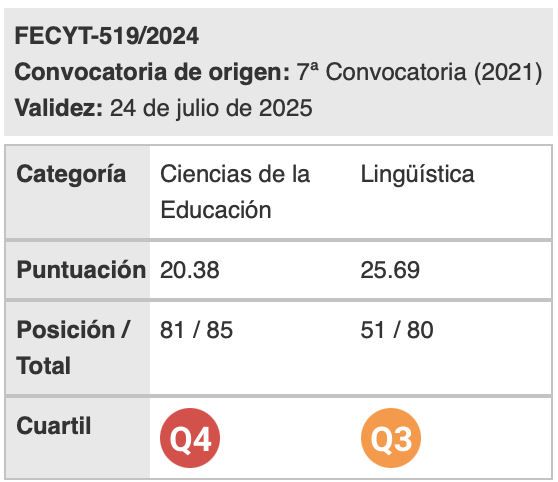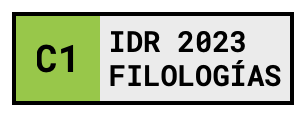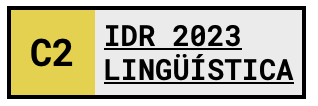Branding and selling a country through translated tourism advertising: Spain’s image
Palabras clave:
advertising, branding, image, reception, tourism, translationResumen
Countries and territories willing to market and sell their products and services abroad do their best to identify them with a defined, specific image or identity, a brand. However, choosing the appropriate one sometimes proves to be a confusing task. Spain is probably one of the best examples, facing problems such as stereotypes, a poor strategic vision and a lack of knowledge of what is expected, and how it is really perceived. Translators are a key figure in this process. As mediators, they are not merely linguistic experts (Fuentes & Kelly, 2000), but intercultural analysts, who should take active part in the process of building the image or brand of a country. The branding and selling of the country often depends on the translator to enhance the communicative effectiveness of the message. This paper analyses the role image plays in Spain’s tourist advertising, and how this has been and is now addressed, illustrating it through a case study of examples from institutional campaigns, reflected on a small-scale reception study among English-speakers aimed at probing the views of tourists.
Descargas
Citas
Adab, B. (2000). Towards a More Systematic Approach to the Translation of Advertising Texts. In A. Beeby, D. Ensinger & M. Presas (Eds.), Investigating Translation (pp. 223-234). Amsterdam/Philadelphia: John Benjamins Publishing Company.
American Marketing Association (2016). Dictionary. <https://www.ama.org/resources/pages/dictionary.aspx?dLetter=I> [5/10/2016].
Andreu, L., Bigné, J. E. & Cooper, C. (2000). Projected and Perceived image of Spain as a Tourist Destination for British Travellers. Journal of Travel and Tourism Marketing, 9(4), 47-67.
Anholt, S. (2000). Nation-brands of the twenty-first century. Journal of Brand Management, 5(6), 395-404.
Appadurai, A. (1990). Disjuncture and Difference in the Global Cultural Economy. In M. Featherstone (Ed.), Global Culture: Nationalism, Globalisation and Modernity (pp. 295-310). London: Sage.
Atlas de Le Monde Diplomatique (2003). Valencia: Ediciones Cybermonde.
Atlas de Le Monde Diplomatique (2013). Valencia: Ediciones Cybermonde.
Cómitre Narváez, I. & Valverde Zambrana, J. M. (2014). How to translate culture-specific items: a case study of tourist promotion campaign by Turespaña. JoSTrans. The Journal of Specialised Translation, 21, 77-111.
Durán Muñoz, I. (2008). “La traducción turística de calidad: una necesidad indudable en la España de hoy.” VII Congreso Anual Internacional de la Asociación Europea de Lenguas para Fines Específicos (AELFE): Investigación y enseñanza de lenguas para fines específicos: nuevos retos, nuevos contextos. 18-20 September 2008, Murcia. (pp. 380-395).
El País (2003). Anuario El País. Madrid: PRISA.
Fuentes Luque, A. (2001). La recepción del humor audiovisual traducido: estudio comparativo de fragmentos de las versiones doblada y subtitulada al español de la película Duck Soup, de los Hermanos Marx, PhD thesis. Granada: Universidad de Granada.
Fuentes Luque, A. (2005). La traducción de promoción turística institucional: la proyección de la imagen de España. In A. Fuentes Luque (Ed.), La traducción en el sector turístico (pp. 59- 92). Granada: Átrio.
Fuentes Luque, A. & Kelly, D. (2000). The Translator as Mediator in Advertising Spanish Products in English-Speaking Markets. In A. Beeby, D. Ensinger & M. Presas (Eds.), Investigating Translation (pp. 235-242). Amsterdam/Philadelphia: John Benjamins Publishing Company.
Heras Marcos, A. (2014). La promoción turística de España: turismo de calidad y Marca España. Degree in Tourism. Final year dissertation. Segovia: Universidad de Valladolid. <http://uvadoc.uva.es/bitstream/10324/5377/1/TFG-N.16.pdf> [8/9/2016].
HSBC Bank. (2016). Expat Explorer. Achieving Ambitions Abroad. <https://www.expatexplorer.hsbc.com/survey/files/pdfs/overall- reports/2016/HSBC_Expat_Explorer_2016_report.pdf> [1/10/2016].
Hu Y. & Ritchie J. (1993). Measuring Destination Attractiveness: A Contextual Approach. Journal of Travel Research, 32(2), 25-34.
Instituto Español de Comercio Exterior (Ed.). (2002). España. La marca. El Exportador, 49, 6-17.
Jiménez-Crespo, M. A. (2013). Translation and Web Localization. New York: Routledge.
Kelly, D. (1997a). Prensa e identidad nacional. La imagen de España en la prensa británica. PhD thesis. Granada: Universidad de Granada.
Kelly, D. (1997b). The Translation of Texts from the Tourist Sector: Textual Conventions, Cultural Distance and Other Constraints. TRANS, 2, 33-42.
Klein, N. (2000). No Logo. Toronto: Vintage Canada.
Lamo de Espinosa, E. (1996). La imagen de España en el exterior. Leviatán. Revista de Hechos e
Ideas, 66, 5-38.
Morgan, N. & Pritchard, A. (2001). Advertising in Tourism and Leisure. Oxford: Butterworth-
Heinemann.
Nobs, M. L. (2003). Expectativas y evaluación en la traducción de folletos turísticos: estudio empírico con usuarios reales. PhD thesis. Granada: Universidad de Granada.
Noya, J. (2002). La imagen de España en el exterior. Estado de la cuestión. Madrid: Real Instituto Elcano de Estudios Internacionales y Estratégicos.
Seguinot, C. (1994). Translation and Advertising: Going Global. Cultural Functions of Translation, monographic of Current Issues Language and Society, 1(3), 249-266.
Soto Almela, J. (2013). La traducción de términos culturales en el contexto turístico español- inglés: recepción real en usuarios anglófonos. Quaderns, Revista de traducció, 20, 235-250.
Zanettin, F. (2008). Comics in Translation: An Overview. In F. Zanettin (Ed.), Comics in Translation (pp. 1-32). Manchester: St. Jerome Publishing.
Descargas
Publicado
Cómo citar
Número
Sección
Licencia
Aquellos autores/as que tengan publicaciones con esta revista, aceptan los términos siguientes:
- Los autores/as conservarán sus derechos de autor y garantizarán a la revista el derecho de primera publicación de su obra, el cuál estará simultáneamente sujeto a la Licencia de reconocimiento de Creative Commons que permite a terceros compartir la obra siempre que se indique su autor y su primera publicación esta revista.
- Los autores/as podrán adoptar otros acuerdos de licencia no exclusiva de distribución de la versión de la obra publicada (p. ej.: depositarla en un archivo telemático institucional o publicarla en un volumen monográfico) siempre que se indique la publicación inicial en esta revista.
- Se permite y recomienda a los autores/as difundir su obra a través de Internet (p. ej.: en archivos telemáticos institucionales o en su página web) antes y durante el proceso de envío, lo cual puede producir intercambios interesantes y aumentar las citas de la obra publicada. (Véase El efecto del acceso abierto).

Revista de Lenguas para fines específicos is licensed under a Creative Commons Reconocimiento-NoComercial-SinObraDerivada 4.0 Internacional License.






















